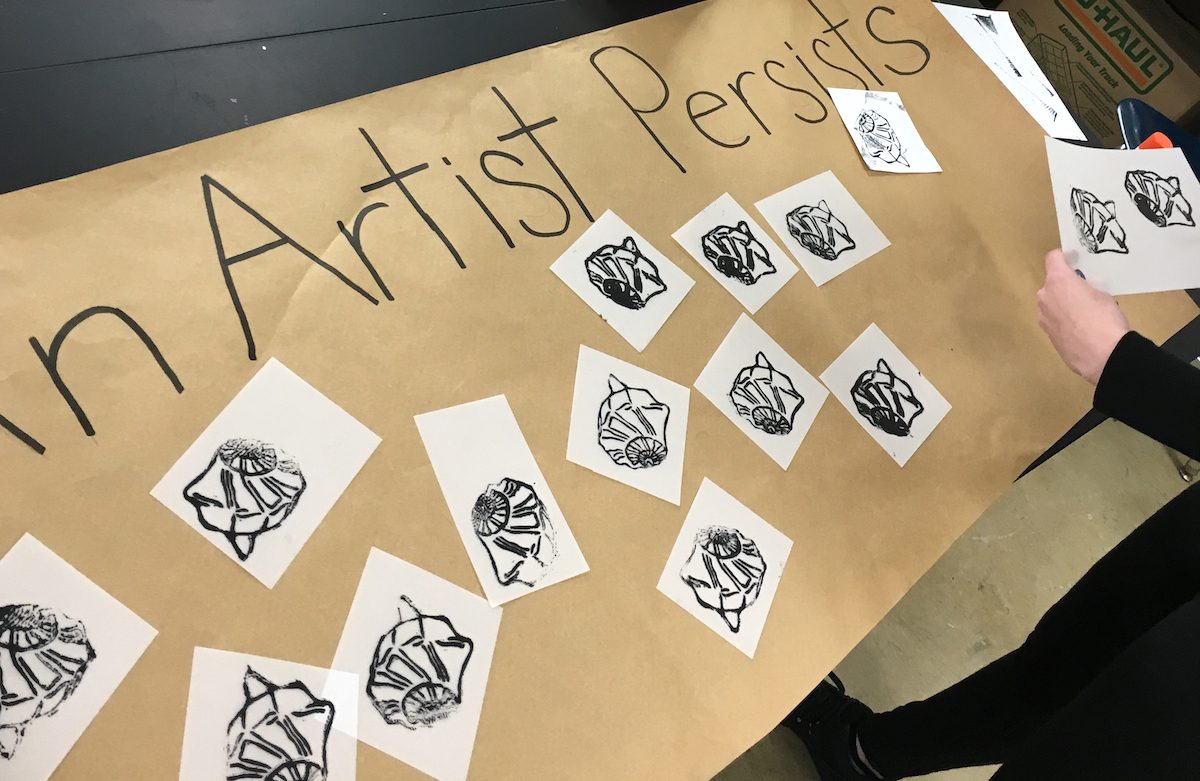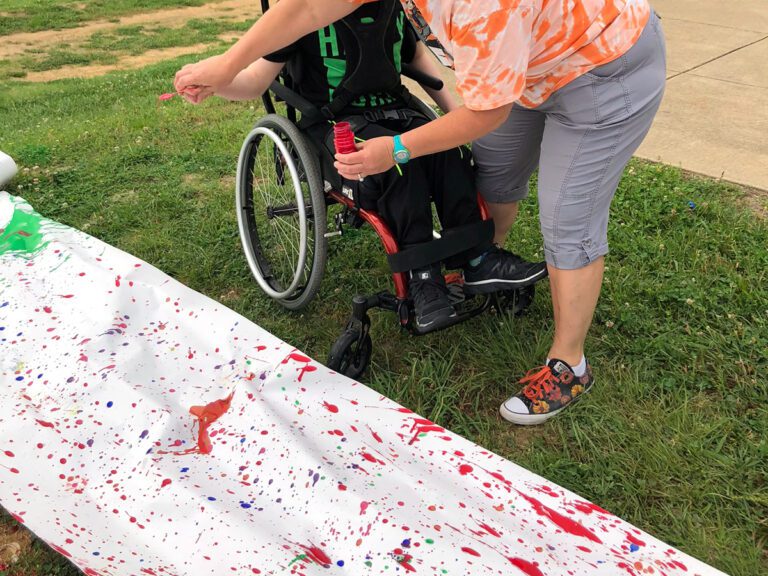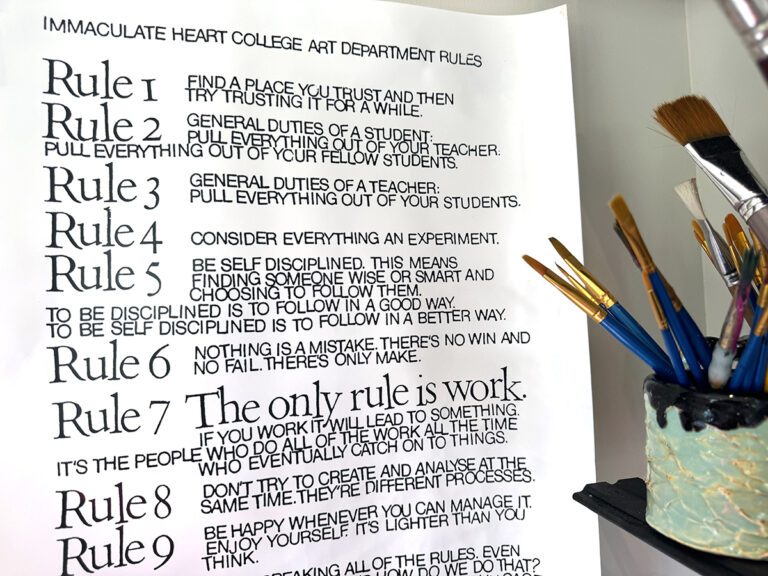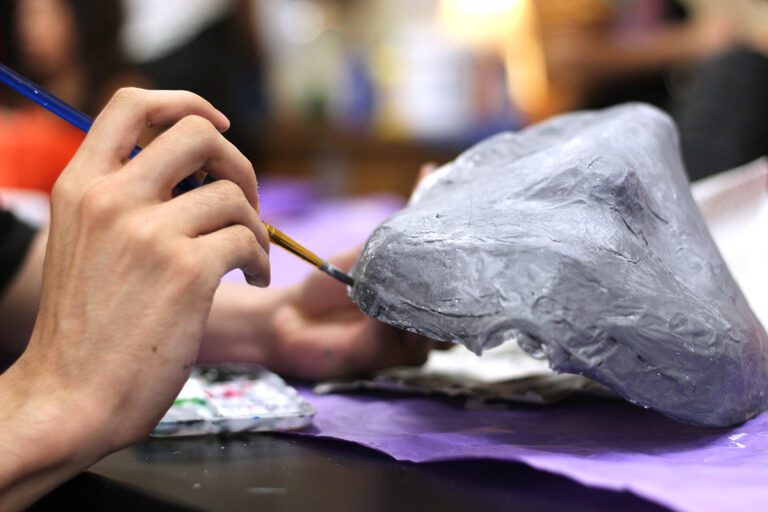As art teachers, we are constantly battling with time management in our classrooms. When it comes to deadlines, some art teachers are sticklers on time, while others are more go-with-the-flow. Regardless of your teaching style, we can all agree goal-setting is an important tool to help empower our students. We can use the creative process and the Studio Habits of Mind (SHoM) to not only reinforce our artistic language, but also to help break down our goals of creating a larger artwork into weeks, days, and moments to achieve goals and expectations.
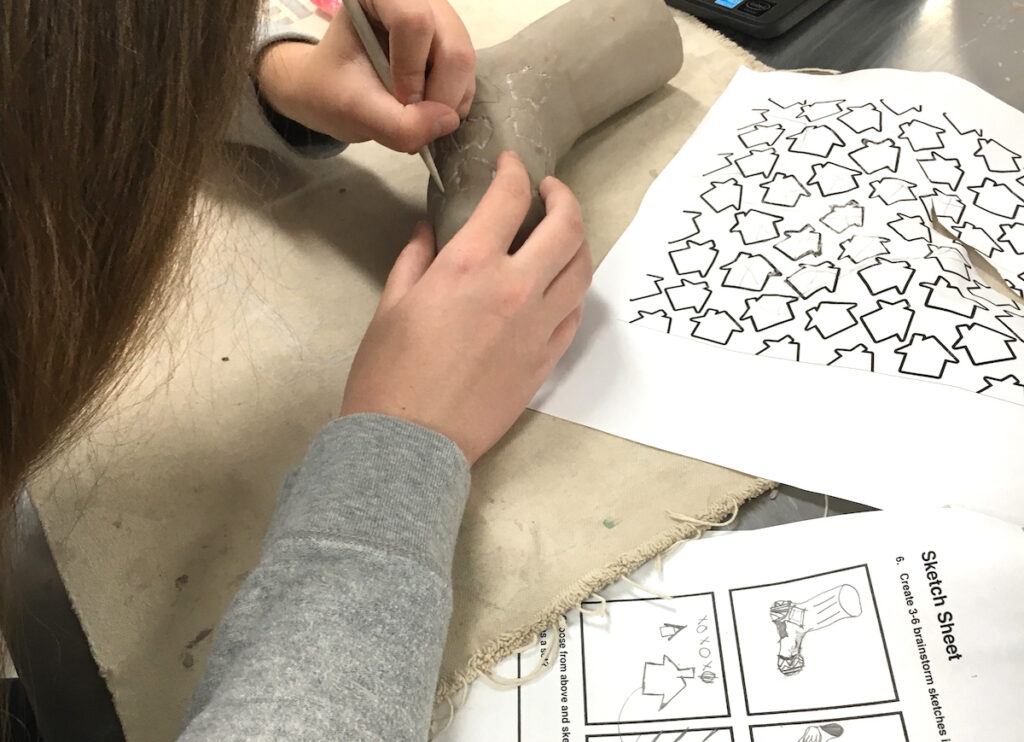
When considering the length of time it may take us to go through the process of creating an artwork, we know that sometimes it can take one day, while other times it may take weeks (or months or even years, in many professional artists’ circumstances). It is essential to teach students how to assess their development and monitor their progress while setting a long-term goal. While the artwork is the end goal, how do we move through our process to hit our deadlines? How can we measure our moment-to-moment or daily progress through our own creative process?
SHoM and the Creative Process
The Studio Habits of Mind framework was developed through the insightful research of Harvard Project Zero and are a great way to introduce and provide metacognitive routines in the classroom to help support the creative process. To discover more, read Studio Thinking 2: The Real Benefits of Visual Arts Education and Studio Thinking from the Start: The K–8 Art Educator’s Handbook. To briefly summarize, the SHoM are the moment-to-moment habits artists go through within and throughout their creative process. The creative process includes the steps artists take to complete their artwork. This can all be very confusing while students are still learning to navigate technical and conceptual skills. However, if you instill routines and consistent language using the Studio Habits of Mind, and provide practice for goal-setting, students will learn how to set goals for themselves when the stakes are much higher.
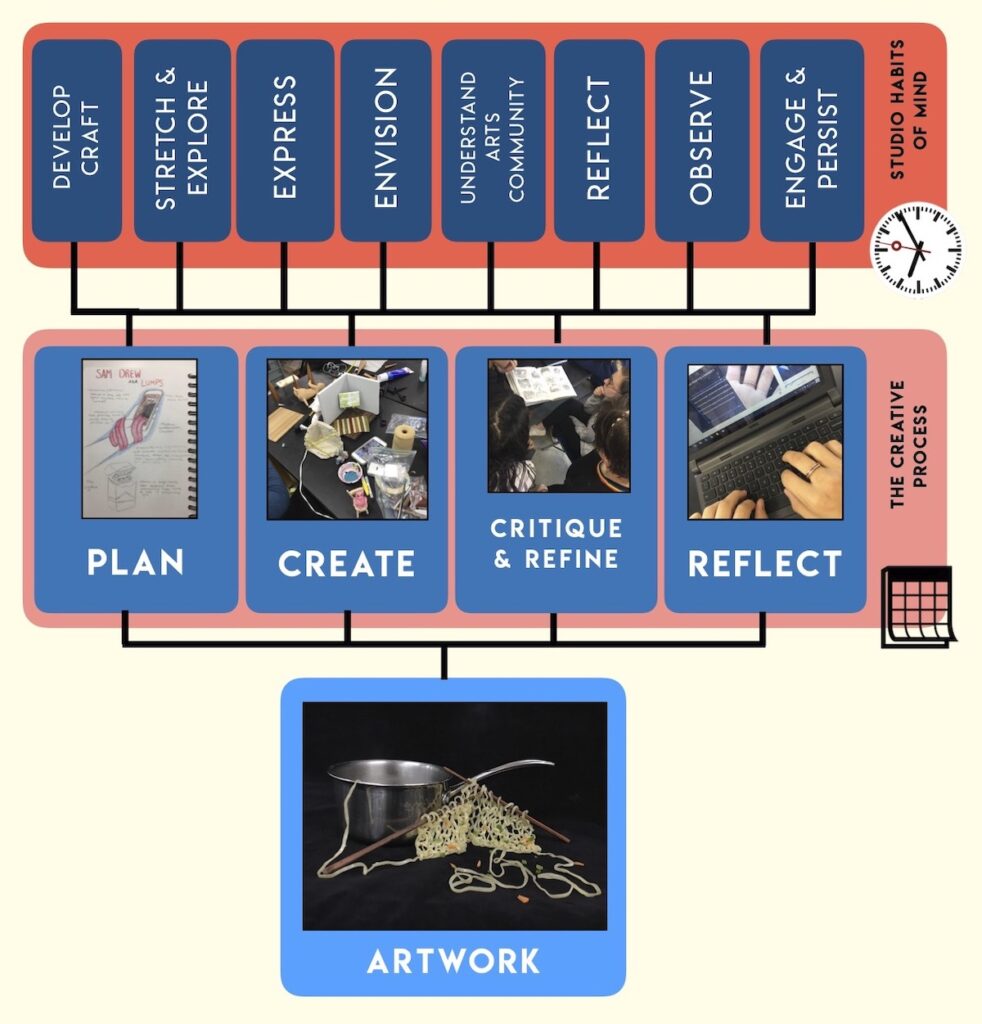
Setting and Writing Quality Goals
After introducing your students to the Studio Habits of Mind and how they relate to the creative process, it is a great time to discuss goal-setting within the same context of the creative process, using the same language of the SHoM. Well written goals are measurable, specific, and attainable.
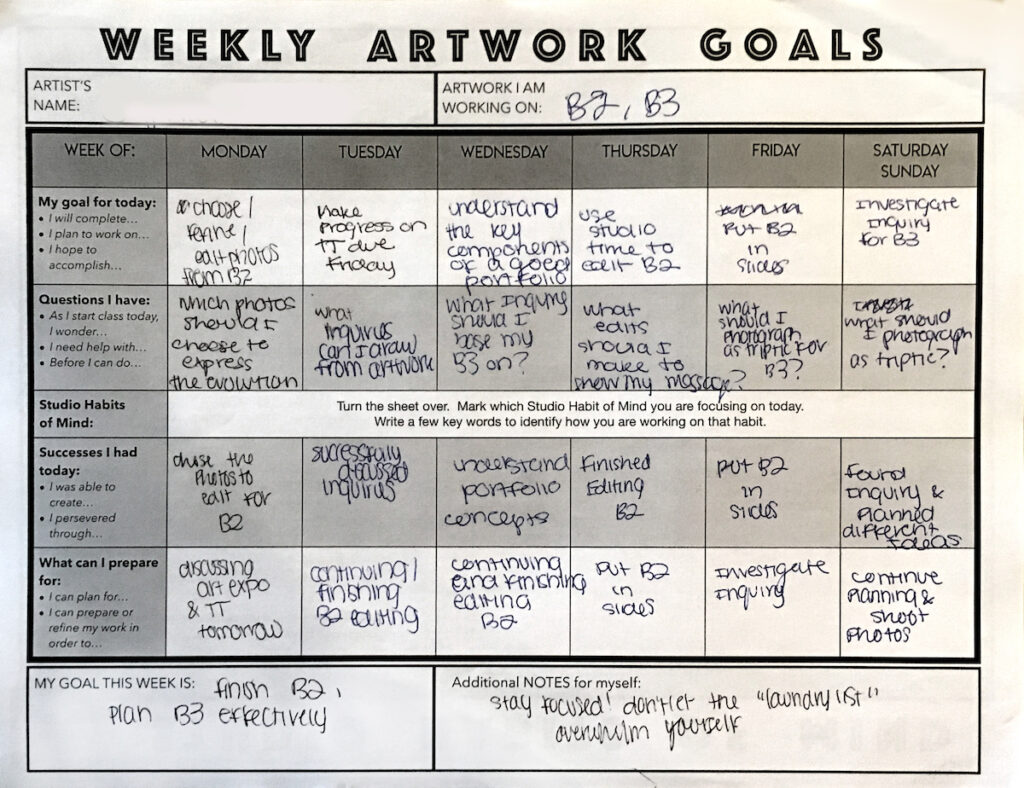
Here are examples of well-written goals:
- Artwork Goal
Create an expressive portrait that demonstrates my anxious feelings toward technology. - Weekly Goal
Determine the best medium to use for my expressive portrait. - Today’s Goal
Practice five different mark-making techniques using charcoal.
Writing Quality Goals Takes Practice
Practice writing goals with your students and model what a well-written goal looks like. What happens when students’ goals are vague like “make progress” or “practice,” or if a student writes something too big such as, “complete my artwork”? While these are great action words and, yes, we want to complete our artwork, they don’t help us connect with our larger goal consistently. Without specifics, we often get lost in the day-to-day grind and lose sight of our purpose.
Because we see what students write down as goals, we can quickly intervene to offer support when they are struggling to manage time throughout their creative process. Whether the student was rushing to get to creating or they are struggling to identify their next steps, this is an easy way to spot the need for a conversation.
Learn more about the Studio Habits of Mind with these resources:
- The National Core Arts Standards Meet the Studio Habits of Mind
- 2 Compelling Reasons for Using the Studio Habits of Mind in Your Art Room
- Use the Studio Habits as a Guide for Reflective Self-Assessment
Goals are also flexible as we continually reassess where we are in our process. As you look ahead, you notice you are not going to meet your goal. No problem! Consider what you will need to do to meet your original goal, or create a new deadline based on your findings. Can’t move the deadline? No problem! Do you need to work more outside of class? Do you need to modify your end results? Whether your deadline is flexible or rigid, students gain valuable experience from learning how to address the needs of this “problem” through self-reflection, self-advocacy, and accountability.
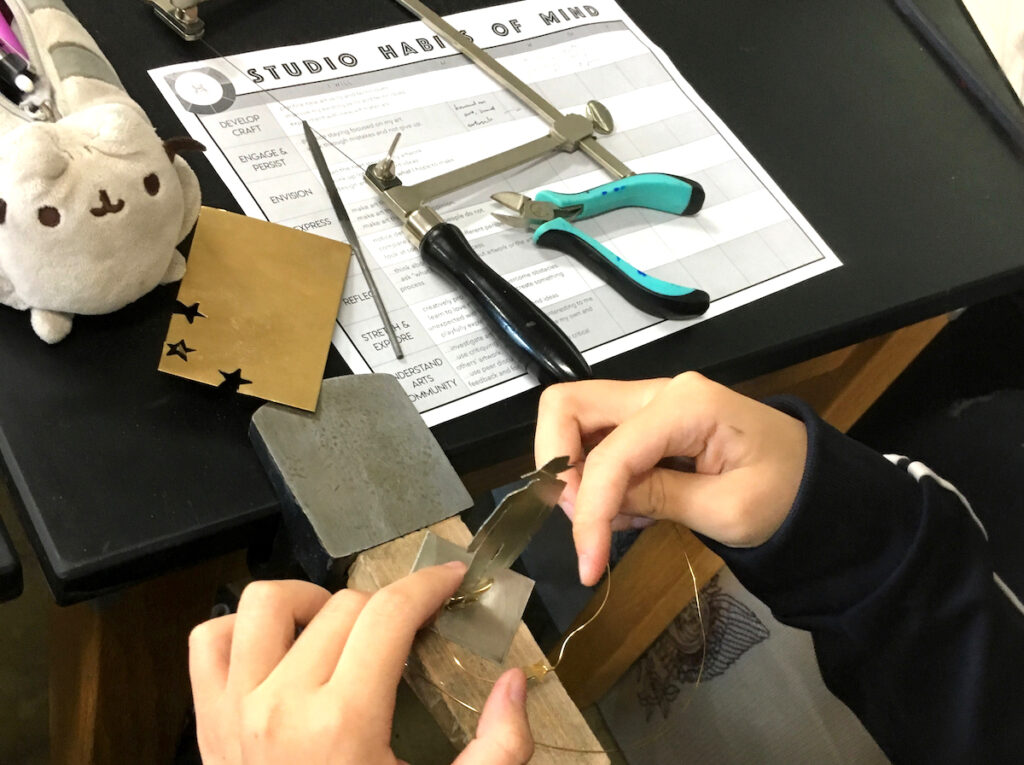
Whatever system you use, make sure to be consistent. Students get into the habit of filling out this goal sheet daily. Now and then, wait until students have filled in their goal sheets for the day and call on students to describe their daily goal, which Studio Habit of Mind they will be focusing on today, or what questions they might have. Throughout the class period, make sure to engage students using the same language when you see it happening in the moment, such as, “Wow, you have been engaging with your work today! You are truly persisting while you solder those pieces together. That is not an easy task, and you keep on trying.” The more explicit you can make the language and processes in your class, the more ingrained it will become into your students’ daily routines.
Authentic and Immediate Assessment
At the end of class, it’s important to ask students to share what successes they had or what they need to do at home to prepare for tomorrow. This is a quick and formative way to assess progress and understanding instead of using a physical exit slip. At the end of the week, when collecting their sheets, you will have additional opportunities to ensure their goals are aligned with what you saw happening in class, answer questions they may not have asked you directly, intervene if their goals are too lofty for the time you have together, and celebrate student successes as they make progress toward their ultimate artwork goal.
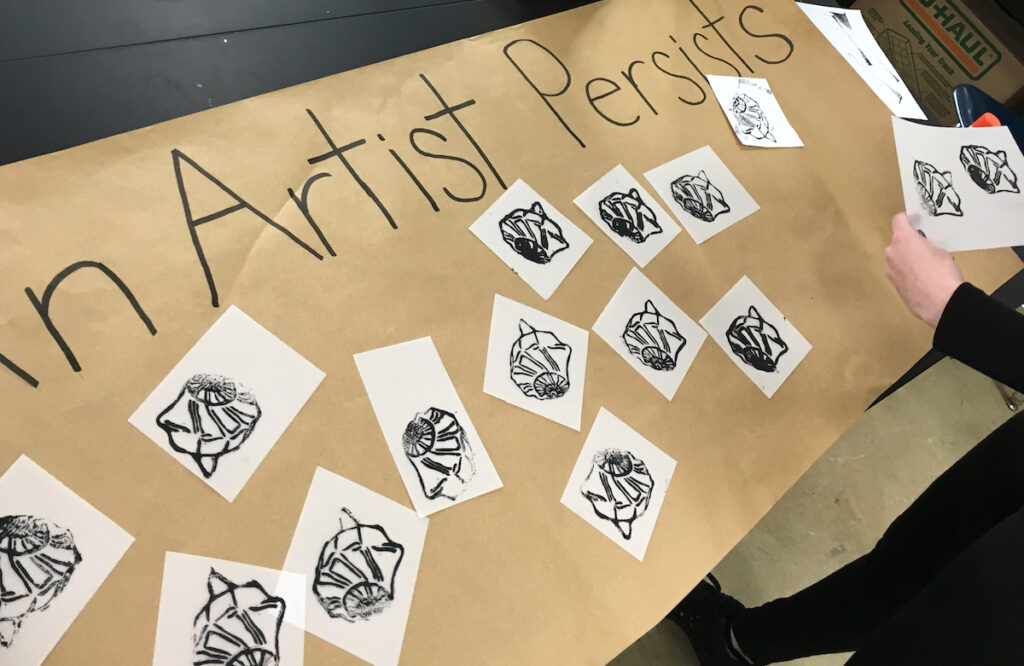
Goal-setting is one of the most valuable tools we can teach our students. When teaching goal-setting explicitly and practicing these skills daily, we are reinforcing the importance of metacognition and self-awareness in a larger picture. These life skills will carry with them beyond the art classroom and help give purpose to their daily routines and habits.
In what ways do you support time management and goal-setting in your classroom?
How do you use the SHoM and the creative process with your students?
Magazine articles and podcasts are opinions of professional education contributors and do not necessarily represent the position of the Art of Education University (AOEU) or its academic offerings. Contributors use terms in the way they are most often talked about in the scope of their educational experiences.
